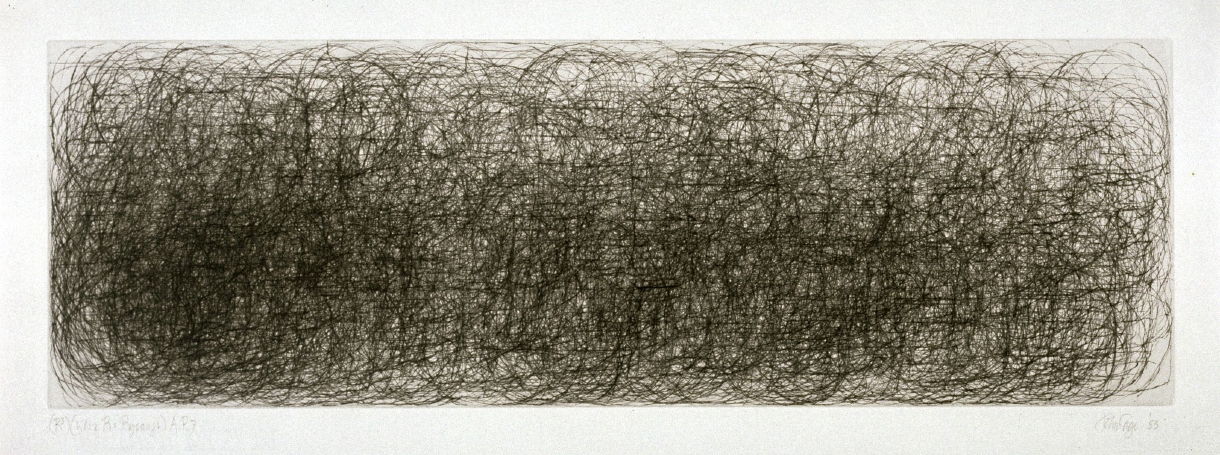Above is the music piece Ryoanji(named the same as the artwork) composed by John Cage in 1985
John Cage was an American composer who is best known for his avant-garde music and his use of randomness in music composition. In addition to composing music, he also uses randomness to create graphic art. For his piece Ryoanji, he had his assistants read computer-generated random numbers off a list. This chooses which rows of rocks to be chosen, which painting brush to be used, and the position of the stone on the paper. The numbers are “truly” random numbers. After this, Cages paints around the stone to trace the outline. In other words, he used computer-generated coordinates which are randomly generated to determine the positions of the graphics in the picture. This piece was created in conjunction with one of his musical piece, which partially composed through randomness, that was named the same title. The is composed of 3375 rock tracings.
What I admire most about this piece is that at first glance, it just seems as if there is nothing special about it. However, after knowing the algorithm that was used to create it, the entire piece seems more interesting. All those lines seem to be random and not random at the same time! Random because the computer chose the numbers through random process and the numbers are entirely dependent on chance. However, at the same time, the piece also seems to be not so random as the values are defined entirely by a machine and drawn according to that. I also enjoy the fact of how it is created to be congruent with the music. Cage’s artistic sensibilities is shown through his choice of only graphite and paper as his medium. The monotone vibe expressed through the piece reflects the serious, heavy experience that the music expresses.
![[OLD FALL 2018] 15-104 • Introduction to Computing for Creative Practice](wp-content/uploads/2020/08/stop-banner.png)
